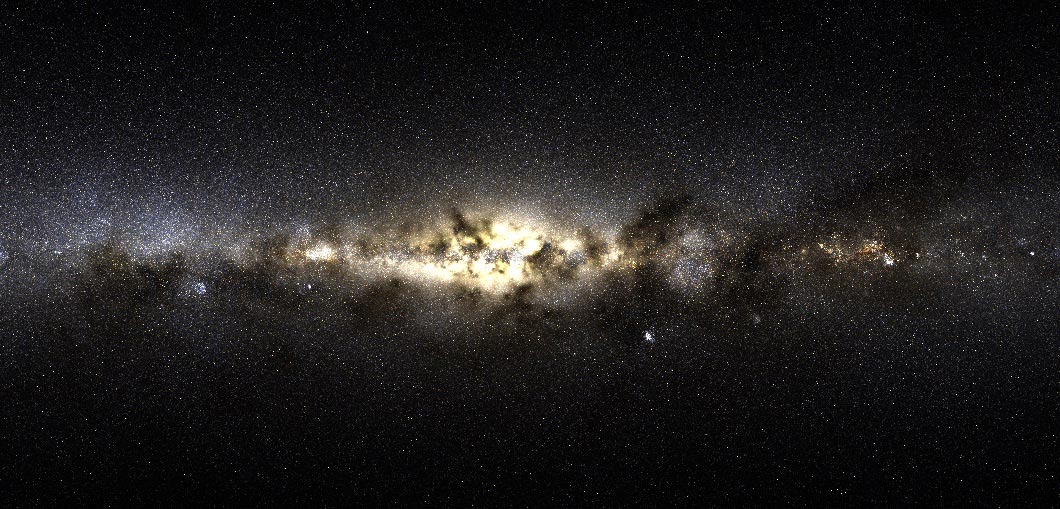
Caltech researchers use deep learning and supercomputing to identify Nyx, a product of a long-ago galaxy merger.
But for Lina Necib, a postdoctoral scholar in theoretical physics at Caltech, the discovery of a cluster of stars in the Milky Way, but not born of the Milky Way, came early – with a little help from supercomputers, the Gaia space observatory, and new deep learning methods.
Writing in Nature Astronomy this week, Necib and her collaborators describe Nyx, a vast new stellar stream in the vicinity of the Sun, that may provide the first indication that a dwarf galaxy had merged with the Milky Way disk.
Necib studies the kinematics — or motions — of stars and dark matter in the Milky Way.
Its goal is to create an extraordinarily precise three-dimensional map of about one billion stars throughout the Milky Way galaxy and beyond.
The FIRE and FIRE-2 simulations follow the region that will become a single galaxy by the present time, tracing the evolution of dark matter and gas, which eventually turns into stars.
The observatory provides the motions of one billion stars,” she explained.
“A subset of it, seven million stars, have 3D velocities, which means that we can know exactly where a star is and its motion.
The discovery of Nyx involved combining these two major astrophysics projects and analyzing them using deep learning methods.
A map of a billion stars is a mixed blessing: so much information, but nearly impossible to parse by human perception.
“We can’t stare at seven million stars and figure out what they’re doing.
The Gaia mock catalogue, developed by Robyn Sanderson (University of Pennsylvania), essentially asked: ‘If the FIRE simulations were real and observed with Gaia, what would we see?’.
Necib’s collaborator, Bryan Ostdiek (formerly at University of Oregon, and now at Harvard University), who had previously been involved in the Large Hadron Collider (LHC) project, had experience dealing with huge datasets using machine and deep learning.
The team developed a method of tracking the movements of each star in the virtual galaxies and labelling the stars as either born in the host galaxy or accreted as the products of galaxy mergers.
These labels were used to train the deep learning model, which was then tested on other FIRE simulations.
“We asked the neural network, ‘Based on what you’ve learned, can you label if the stars were accreted or not?'” Necib said.
The model ranked how confident it was that a star was born outside the Milky Way on a range from 0 to 1.
“We needed to make sure that we’re not learning artificial things about the simulation, but really what’s going on in the data,” Necib said.
These include “the Gaia sausage” — the remains of a dwarf galaxy that merged with the Milky Way about six to ten billion years ago and that has a distinctive sausage-like orbital shape.
The Gaia sausage was there, as was the stellar halo — background stars that give the Milky Way its tell-tale shape — and the Helmi stream, another known dwarf galaxy that merged with the Milky Way in the distant past and was discovered in 1999.
The model identified another structure in the analysis: a cluster of 250 stars, rotating with the Milky Way’s disk, but also going toward the center of the galaxy.
The project required advanced computing at many different stages.
The researchers used clusters at the University of Oregon to train the deep learning model and to apply it to the massive Gaia dataset.
The next data release of Gaia in 2021 will contain additional information about 100 million stars in the catalogue, making more discoveries of accreted clusters likely
“When the Gaia mission started, astronomers knew it was one of the largest datasets that they were going to get, with lots to be excited about,” Necib said